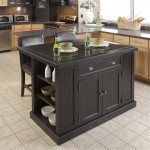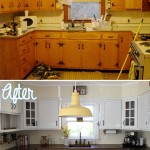Brushed Nickel Kitchen Faucets With Sprayer: A Comprehensive Guide
The selection of a kitchen faucet is a significant decision for any homeowner or renovator. Beyond mere functionality, the faucet contributes substantially to the overall aesthetic of the kitchen. Brushed nickel kitchen faucets with sprayers are a popular choice, offering a blend of contemporary style, durability, and practicality. This article provides a detailed overview of these faucets, exploring their benefits, variations, installation considerations, and maintenance tips.
Brushed nickel finish, characterized by its warm, subtle sheen, has gained prominence in kitchen design. This finish is created by mechanically brushing the nickel material, resulting in fine lines that diffuse light and minimize the appearance of water spots and fingerprints. Consequently, brushed nickel faucets maintain a cleaner appearance compared to polished chrome or other high-gloss finishes. The integration of a sprayer adds another layer of utility, facilitating tasks such as rinsing dishes, cleaning sinks, and filling pots with ease.
Advantages of Brushed Nickel Finish
The brushed nickel finish offers several advantages over other faucet finishes, contributing to its growing popularity. These benefits extend beyond aesthetics, impacting both the practicality and longevity of the faucet.
Firstly, brushed nickel is highly resistant to corrosion and tarnishing. The protective layer formed during the brushing process safeguards the underlying metal from oxidation and environmental damage. This resilience ensures that the faucet maintains its appearance over time, even with constant exposure to water and cleaning agents.
Secondly, as mentioned previously, the textured surface of brushed nickel minimizes the visibility of water spots and fingerprints. This is a significant advantage in busy kitchens where constant cleaning might not always be feasible. The finish helps to maintain a cleaner and more presentable look with minimal effort.
Thirdly, brushed nickel offers versatility in design. It complements a wide range of kitchen styles, from traditional to contemporary. Its neutral tone blends seamlessly with various countertop materials, cabinet colors, and appliance finishes. Whether the kitchen features granite countertops, stainless steel appliances, or wooden cabinetry, a brushed nickel faucet can integrate harmoniously into the overall design scheme.
Finally, brushed nickel is generally more affordable than some other premium finishes, such as oil-rubbed bronze or polished brass. This makes it an accessible option for homeowners seeking a stylish and durable faucet without exceeding their budget.
Types of Brushed Nickel Kitchen Faucets With Sprayer
Brushed nickel kitchen faucets with sprayers are available in a variety of designs and configurations, catering to different functional needs and aesthetic preferences. Understanding the different types available is crucial for making an informed purchasing decision.
Pull-Down Faucets: These faucets feature a sprayer head that can be pulled down from the spout. This design is particularly useful for reaching all areas of the sink and for filling large pots and pans. Pull-down faucets often have a retractable hose mechanism that allows the sprayer head to return smoothly to its original position. These are particularly useful with deeper sinks for easier cleaning and washing.
Pull-Out Faucets: Similar to pull-down faucets, pull-out faucets also have a retractable sprayer head. However, the sprayer head pulls out horizontally from the spout rather than downwards. This design is often preferred for shorter sinks or for individuals who find the pull-down motion less comfortable. Pull-out faucets are generally more compact than pull-down models, making them suitable for smaller kitchens.
Bridge Faucets: Bridge faucets are characterized by a horizontal bar that connects the hot and cold water handles. The sprayer is typically a separate component that is mounted next to the faucet. Bridge faucets offer a classic and elegant look, often found in traditional or farmhouse-style kitchens. They are more complicated to install, requiring three holes in the countertop or sink.
Two-Handle Faucets: These faucets feature separate handles for hot and cold water, allowing for precise temperature control. The sprayer can be integrated into the spout or mounted separately. Two-handle faucets are available in a variety of styles, from traditional to modern, offering versatility in design.
Single-Handle Faucets: Single-handle faucets feature a single lever that controls both the water flow and temperature. The sprayer is typically integrated into the spout or mounted separately. Single-handle faucets are easy to operate and are often preferred for their minimalist design. Cleaning can also be easier with single handle faucets due to its construction.
Beyond these basic types, faucets may also incorporate additional features such as touch activation, motion sensors, and water filtration systems. These advanced features enhance convenience and functionality, but they also increase the price point.
Installation and Maintenance Considerations
Proper installation and regular maintenance are essential for ensuring the longevity and optimal performance of a brushed nickel kitchen faucet with sprayer. Careful planning and attention to detail can prevent common issues and extend the lifespan of the faucet.
Installation: Installation of a kitchen faucet can be a DIY project for homeowners with basic plumbing skills. However, it is often recommended to hire a qualified plumber, especially if the installation involves modifying existing plumbing lines or installing a new sink. Incorrect installation can lead to leaks, water damage, and other problems that can be costly to repair.
Before installing the faucet, it is important to shut off the water supply to the sink. This can be done by turning off the shut-off valves located under the sink. If there are no shut-off valves, the main water supply to the house must be turned off. Following the manufacturer's instructions carefully is also essential for proper installation. This includes attaching the water supply lines, connecting the sprayer hose, and securing the faucet to the sink or countertop. Ensuring that all connections are tight and leak-free is crucial.
Maintenance: Regular cleaning is essential for maintaining the appearance of a brushed nickel faucet. A soft cloth and mild soap and water are typically sufficient for removing dirt and grime. Abrasive cleaners and scouring pads should be avoided as they can scratch the finish. For stubborn stains or water spots, a solution of vinegar and water can be used. Applying a small amount of mineral oil or furniture polish can also help to protect the finish and enhance its sheen.
In addition to cleaning the exterior of the faucet, it is also important to periodically inspect and clean the sprayer head. Mineral deposits can accumulate in the sprayer head over time, reducing water flow and affecting spray performance. Soaking the sprayer head in vinegar or a descaling solution can help to remove these deposits. It is also important to check the sprayer hose for leaks or damage. A damaged sprayer hose should be replaced immediately to prevent water damage.
Furthermore, monitoring the water pressure is important. Excessively high water pressure can put stress on the faucet components and shorten their lifespan. If the water pressure is too high, a pressure regulator can be installed to reduce it to a safe level.
Finally, lubricating the moving parts of the faucet can help to prevent stiffness and ensure smooth operation. A silicone-based lubricant can be applied to the handles and spout to keep them moving freely. The cartridge inside the faucet might also need to be replaced eventually. This is a relatively simple task, but it is important to use the correct replacement cartridge for the faucet model.
In summary, brushed nickel kitchen faucets with sprayers offer a combination of style, durability, and functionality that makes them a popular choice for modern kitchens. By understanding the advantages of the brushed nickel finish, the different types of faucets available, and the importance of proper installation and maintenance, homeowners can select a faucet that meets their needs and enhances the overall aesthetic of their kitchen.
The faucet market contains a multitude of brands and models, each with its own unique features and price points. Researching different brands and reading customer reviews can help homeowners make an informed decision. Factors such as warranty, customer support, and availability of replacement parts should also be considered. Spending a little time researching faucets before purchasing can lead to a more satisfactory and long-lasting investment.
Ultimately, the perfect brushed nickel kitchen faucet with sprayer is one that complements the kitchen's design, meets the homeowner's functional needs, and provides years of reliable service. Careful consideration of the factors outlined in this article can help homeowners find the ideal faucet for their kitchen.

Brushed Nickel Kitchen Faucet Sink Mixer Pull Down Sprayer Single Handle Ebay

Brushed Nickel Kitchen Faucet Sink Pull Down Sprayer 3 Hole With Soap Dispenser Ebay

Pull Down Sprayer Kitchen Faucet 803 Brushed Nickel Msi

Akdy Brushed Nickel Single Handle Pull Down Kitchen Faucet With Sprayer Kf0008 At Lowes Com

Brushed Nickel Kitchen Faucet Swivel Single Handle Pull Down Sprayer Mixer Tap Ebay

Ruiling Modern 3 Spray Mode Single Handle Pull Down Sprayer Kitchen Faucet With Lead Free In Stainless Steel Brushed Nickel Atk 103 The Home

Klempner Professional Pull Down Spray Kitchen Faucet Signature Faucets

Sprayer Kitchen Faucet 805 Brushed Nickel Msi Faucets

Fontaine Builder S Series 4 Hole Kitchen Faucet With Side Spray In Bru Italia Faucets Inc

Heemli Gooseneck Single Handle Pull Down Sprayer Kitchen Faucet With Deckplate Out Sink In Brushed Nickel Kbn0101n The Home








